This guide is dedicated to tropical plants care.
If you could go just about anywhere in the world, where would it be? Hawaii? Peru?
Most will say that they want to explore the world’s tropical regions.They are known for containing some of the most beautiful tropical plants with an exotic flair.
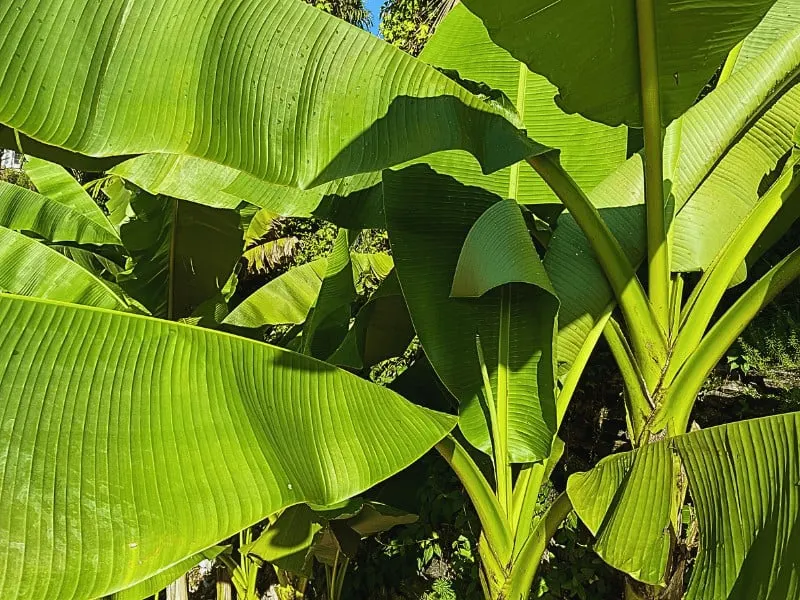
Tropical Plants Care
To care for tropical plants, use a potting mix containing peat moss, perlite, and vermiculite. Provide 12-14 hours of bright indirect light. Water tropical plants about once a week and a temperature within 65-75°F (18 -24°C). Provide a humidity of 60% or more. Fertilize bi-weekly in spring and summer using a liquid fertilizer.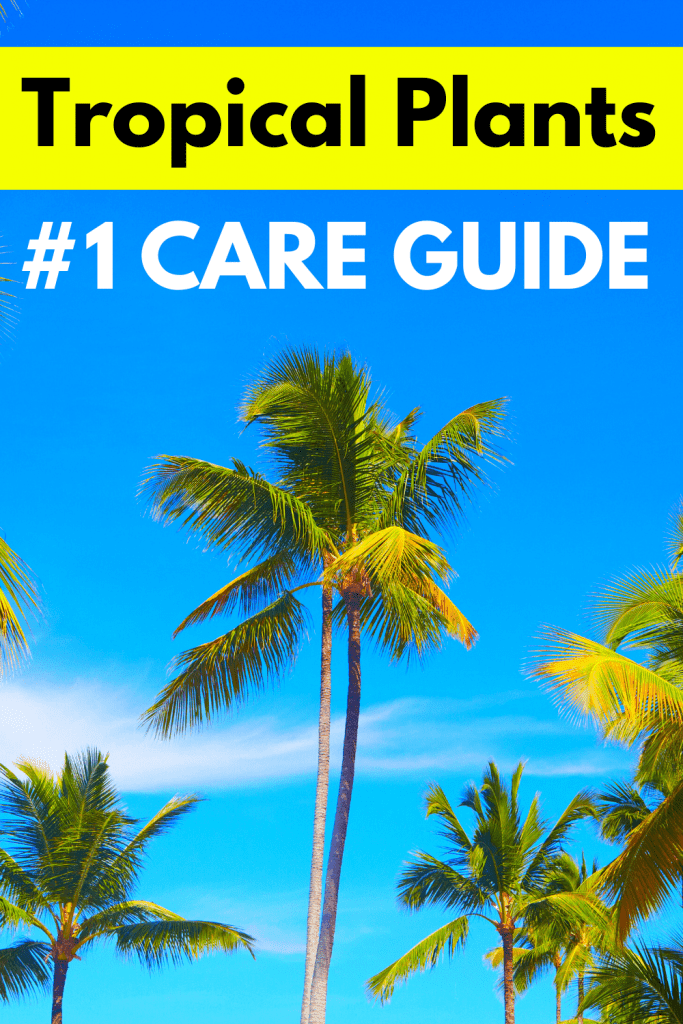
Table of Contents
Tropical Plants Care Basics
Your house may not have the temperature and humidity of a tropical rainforest, but that does not mean you can count these plants out of your collection. There are ways in which you can mimic their native environment without turning your home into a sauna. The following section is devoted to ensuring that you meet the essential needs of a tropical plant.
![Tropical Plants Care #1 Best Guide [Expert Advice] 1](https://plantophiles.com/wp-content/uploads/2023/08/Here-you-can-see-my-plant-wall-at-home.-Try-to-mimic-the-natural-environment-of-tropical-jungles-1.jpg.webp)
Soil
The soil of a rainforest or jungle is rich in organic matter.
It also is quite loose, allowing the water to drain down to the roots of a plant without having it sit in water.
You’ll want to remember this when considering the best potting mix for your tropical plant.
Indoor potting soil that suits these floras well includes a mixture of peat moss, perlite, and vermiculite.
This allows the soil to absorb the water quickly and efficiently. The only problem is that it also dries out rather fast.
I recommend keeping the soil at a slightly acidic pH level if you can.The most important soil component is how well it drains. Don’t choose soils that are compact and heavy such as clay.
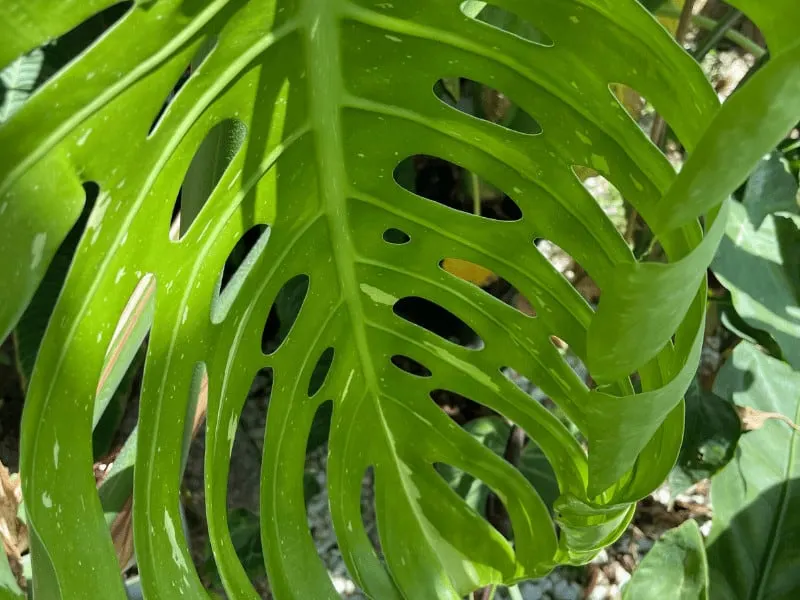
There are potting mixes that seem to have tropical plants in mind, supplying additional nutrients that your flora may be lacking.
Light
Tropical plants found within their natural environment are constantly competing for light.
If you’ve ever seen a photo of a dense rainforest, you’ll quickly realize how the plants seem to grow over one another.
This is because they all need light, and nobody wants to share. Tropical plants, even when kept indoors, thrive off of ample sunlight.
This light should be rather bright but never direct. Those leaves, although large and rather thick, are susceptible to scorching under the wrong conditions.
Most individuals will be happy if given roughly 12 to 14 hours of light daily. Keep in mind that not every species will want this. Some tropical plants prefer to be placed in a window that gets lower light levels.
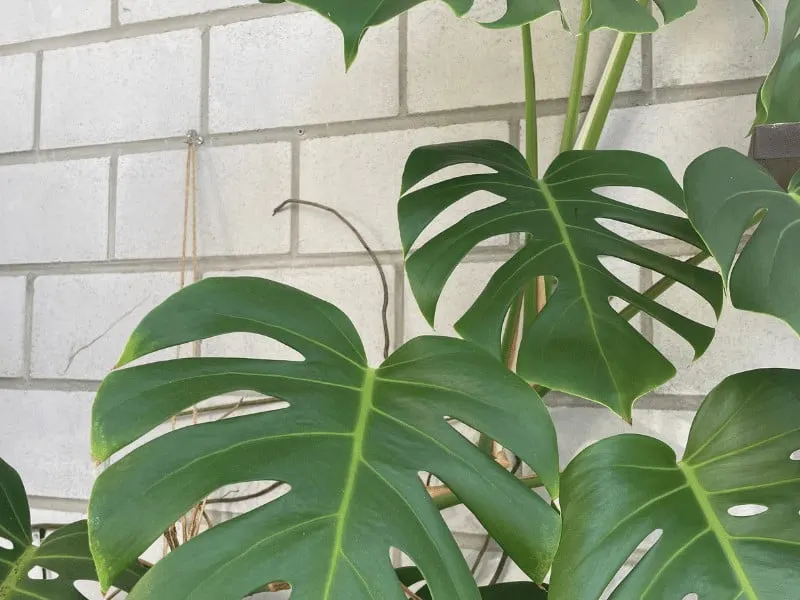
Watering
The general rule for tropical plants is that they tend to survive with more water rather than not enough.
This can be a slippery slope. Sure, they do prefer to have their soil stay evenly saturated.
Just don’t allow your flora to sit in water.
This can result in negative consequences such as root rot or wilting of the leaves.
Once a week tends to be a proper amount of time so your plant does not dry out.When watering, you’ll want to do so with a certain method. Watering cans allow the water to reach every part of the soil, even adding moisture to the leaves.
This is referred to as the “top-water” method. As with most plants, you’ll want to provide drainage holes on the underside of the container or pot. Your tropical plant should never be allowed to sit in water. The root ball is sensitive to root rot.
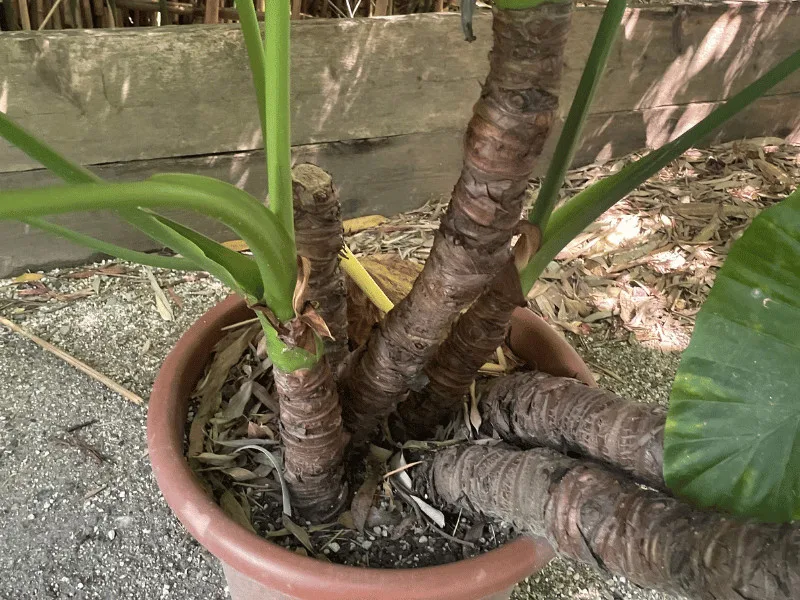
Temperature
Temperatures between 65-75 degrees Fahrenheit (18 and 24 degrees Celsius) are ideal.
Tropical environments are known for being somewhat warm year-round. Most owners who keep their flora outside will need to bring them in during the night if there’s a particularly drastic shift in temperature.
Humidity
Humidity isn’t all that important for most plants, especially those in the correct room.
Tropical species depend upon this added moisture levelto keep their leaves and flowers vibrant.
Most homes lie between forty and sixty percent humidity.
Unfortunately, this is still too low for a tropical indoor plant. You should aim to reach a humidity that is at least sixty percent.
Anything over eighty percent is far too high and can lead to damaged leaves or roots. But how can you supply them with these levels without turning your home into a sauna?
You can implement a misting routine to give those leaves more water than the typical watering. Specific rooms, such as the bathroom and kitchen, tend to have a higher level of humidity.
Tropical Plant Care Fertilizer
If you want to own a decadent tropical plant, you should likely invest in a high-quality fertilizer.
Those flashy flowers you see in flora, such as Hibiscus,are extremely taxing to the individual.
Tropical plants are known for lacking Phosphorous compared to other nutrients.
It also won’t hurt to have the addition of iron magnesium.Balanced fertilizers should be applied every two weeks during spring and summer.
You should wait until the earlier months of spring or late summer to addadditional supplements.
Do not add any fertilizer when the plant is not actively growing.
Growth
Tropical plants are known to be “epiphytic.” This means that they use another flora individual for support.
Considering a tropical rainforest, the environment is shrouded in nothing but green.
This is because they need to climb to gain that necessary sunlight.
Another reason is that they need to gather water that drips down from the host plant.
This makes it more advantageous to spread out and shoot upward. But what about your houseplant? Will it take over the corner of your room? Not necessarily.
There are smaller species that only reach a foot or two in height. You could also have a species that reaches seven feet tall.
The beauty of tropical plants is that you find the right one that matches the size of your home! Remember that the average tropical flora will live anywhere between two and five years of age.
Potting
The roots of a tropical plant are known for being quite dense, quickly growing down with small branches.
For this reason, they need to be in the proper pot.
A container too small will render them cramped, thus leading to a slew of other problems. There is a proper time to transfer your tropical plant to a new pot.
Commence with this process when you see new growth start to form.
This usually will be during the spring months. Moving your plant from one pot to another may be somewhat stressful.
Doing it during the spring gives the individual enough time to recover. When you add the soil to your new pot, compress the soil as far down as possible.
This will remove and limit any potential air pockets. Immediately water once you have it in its new home!
If you’re apprehensive about repotting your tropical plant, check out this article!
Tropical Plants Care in Winter
Tropical plants become damaged when exposed to anything below 50 degrees Fahrenheit (10 degrees Celsius). Keep tropical plants inside in winter and avoid cold drafts from being close to or open windows.
Avoid fans and heating units, as this can dry out the plants too quickly.
Water your tropical plants less in autumn and winter.
Tropical plants go into dormancy and also need no or less fertilizer.
From late spring to early fall, tropical plants can stay outside before the growing season ends when temperatures drop below 50 degrees Fahrenheit at night (10 degrees Celsius).
Watering your Tropical Plants Right
The act of watering a tropical plant is one of the most important aspects when it comes to the overall health and well-being of these individuals.
As much as they love moisture, these plants are not immune to getting root rot when given too much moisture. The first rule of thumb is to ensure that the underside of your pot has enough drainage holes.
Illinois University suggests to water until water comes out of the drainage holes.
This will allow the water to pass through without leaving the flora in the moisture.
The next piece of advice that we can give you is only to water your tropical plant when it truly needs it. You can easily check on it by sticking your finger in the first inch of the soil.
If it is not moist, you’ll need to add more water.
Don’t go more than a week without checking on the soil. You should get into the habit of surveying the substrate for dryness.
Fortunately, your plant will be able to obtain additional moisture through misting.
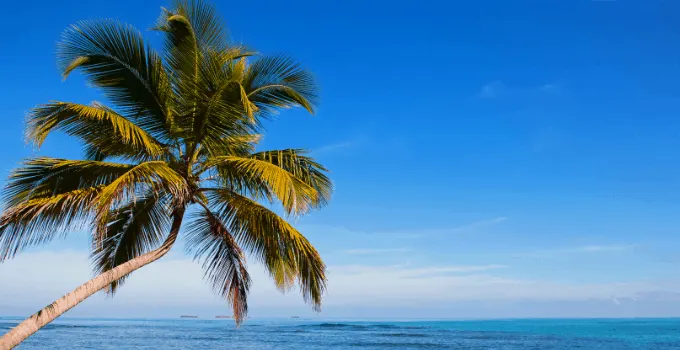
Propagating Tropical Plants
There are several ways in which you can go about propagating your tropical plant. You can propagate tropical plants using stem cuttings and seed germination.
You can root the cuttings directly in soil or water. Alternatively, you can use sphagnum moss.
Stem cuttings tend to be the most reliable, even amongst the various species found within this group of plants.
Let’s take a moment to talk about the steps involved with stem cutting.
Propagation Through Stem Cuttings
- Find the nodes on your healthy tropical plant and make an incision below it with clean, sharp scissors.
- Your cuttings should be about four to six inches in overall length.
- Take any leaves off of the stem that are located on the lower half. This is because it will take more energy from your plant.
- Now, you can dip your stem into a rooting hormone, though this is not mandatory!
- Plant a few stem cuttings into a pot with freshly laid soil so their exposed end is in the substrate. Proceed to give them a full watering session.
- Consider placing a bag over the stem cuttings to increase humidity and moisture while they grow.
- Check back after a week or two. You should start to see results in two weeks, which you can then transfer to a larger pot.
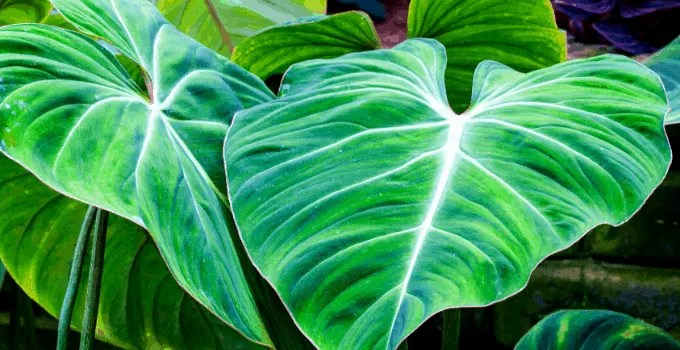
PESTS AND THE TROPICAL PLANT
Supplying your tropical plant with enough water isn’t the only thing you should worry about.
There are severalissues that can happen, such as pests and diseases.
In fact, even if you were to watch your tropical plant carefully, you could still see a pest or two. Healthy floras are susceptible to these issues. Here are the most common bugs and diseases that attack tropical plants.
Finding a bug on the foliage of your plant is highly frustrating! Pests can come in through the window or even be found in the soil you bought from the store.
Insects that usually attack tropical plants tend to be of the flying variety. These include gnats, aphids, spider mites, mealybugs, scale insects, and thrips.
The best way to eliminate these invaders is to use insecticidal soaps, liquid dish soap mixed with water, or organic neem oil.
The Marble Queen Pothos is a tropical plant at risk for battling mealybugs and other pests!
Bugs aren’t the only culprits when it comes to an outside source attacking your tropical plant.
Fungal conditions such as leaf curl, scales, and root rot are the most prevalent.
Several fungicides can help you combat these diseases.
You may need to cut away the dying foliage depending on how bad it is or how quickly you caught the issue. If this happens, burn it so that it can’t contaminate the rest of your individual.
Tropical Plant Problems
Your plant can let you know if it’s struggling. All you have to do is be able to look for the signs.
Tropical houseplants are known for being a little sensitive in their requirements – particularly regarding water.
Use the following signs to give you aid in how to help meet all of their needs along the way!
PROBLEM #1: Faded Foliage
One aspect people think of with tropical plants is how vibrant they can be, even the leaves.
Anything outside that strikingly bright green should tell you they aren’t getting enough light.
Not getting enough light is an easy issue to fix. Simply shift their pot to a location that gets more sunlight, as long as it isn’t direct. You can also add your light if you prefer the spot they are in.
PROBLEM #2: Discolored Leaves
We mentioned that anything outside of that typical tropical green should be an indicator that there is a problem afoot. The browning and yellowing of leaves are linked to a lack of water.
With this discoloration, you can assume you aren’t supplying enough water or humidity to your tropical plant.
Check the soil more frequently and adjust your watering schedule accordingly.
Also, consider misting regularly.
PROBLEM #3: Droopy Foliage
Leaves that sag indicate that your plant is struggling with water. The tricky part is that this can be over and under-watering.
We suggest checking the soil with your finger and going from there. Tropical plants prefer to keep their soil evenly moist without sitting in water.
PROBLEM #4: Slow Growth Rate
Is your tropical plant not reaching its full potential as quickly as expected? It’s safe to assume this is due to a lack of overall light.
Finding a window that gets plenty of indirect, bright sunlight may end your leggy tropical plant. You can also use the addition of lights above your flora.
5 Takeaways for a Thriving Tropical Plant
I understand there might be a lot of information regarding overall care, but here are the main points!
- Any soil will do as long as it can drain properly!
- Fertilizer can help keep your plant vibrant and full.
- Look into the specific light requirements of your particular tropical plant, but remember that they prefer ample sunlight.
- Expect to water your plant once a week or enough to keep it evenly moist.
- Keep an eye out for potential pests and diseases along the way!
Tropical Plant Names (including pictures)
1. Hibiscus (Hibiscus rosa-sinensis): Large, showy flowers in multiple colors such as white, red purple, and yellow.
![Tropical Plants Care #1 Best Guide [Expert Advice] 2](https://plantophiles.com/wp-content/uploads/2023/08/White-Hibiscus.jpg.webp)
2. Bougainvillea (Bougainvillea spp.): This flowering vine is known for its bright and colorful bracts surrounding small white flowers.
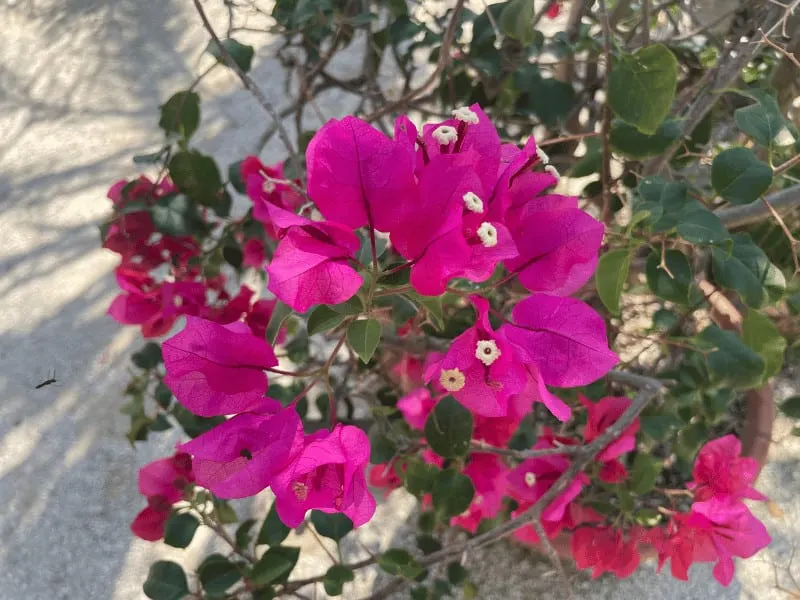
3. Bird of Paradise (Strelitzia reginae): Bird-like looking flowers. Upright growth and large green foliage.
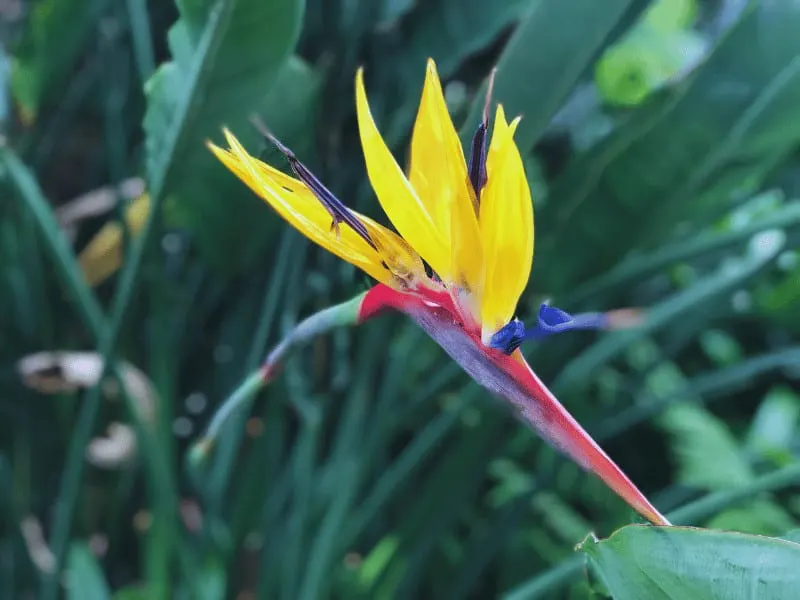
4. Plumeria (Plumeria spp.): Also known as frangipani. Beautiful looking fragrant flowers.
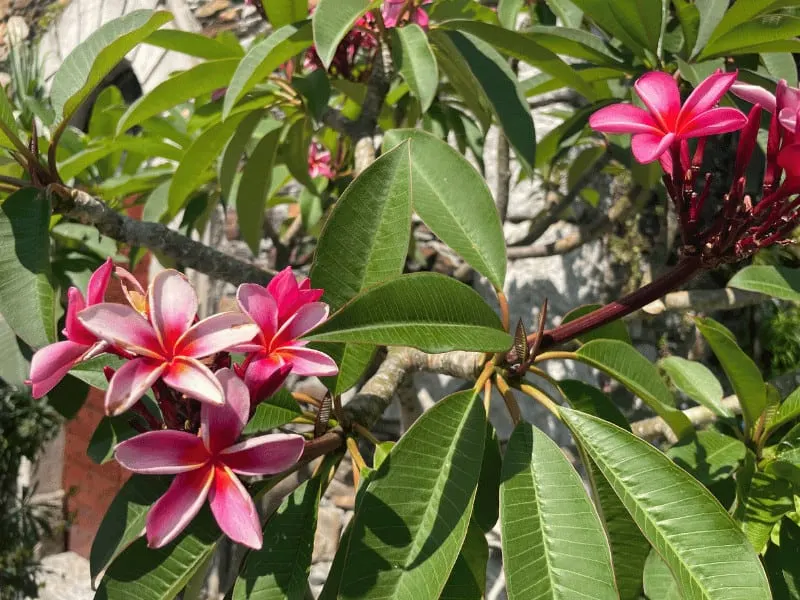
5. Banana Plant (Musa spp.): Very large green foliage. Well-known for the banana fruit.
![Tropical Plants Care #1 Best Guide [Expert Advice] 3](https://plantophiles.com/wp-content/uploads/2023/08/Banana-Plant.jpg.webp)
6. Fiddle Leaf Fig (Ficus lyrata): The Fiddle Leaf Fig is hard to grow but produces large green leaves that are cardboard-like and round.
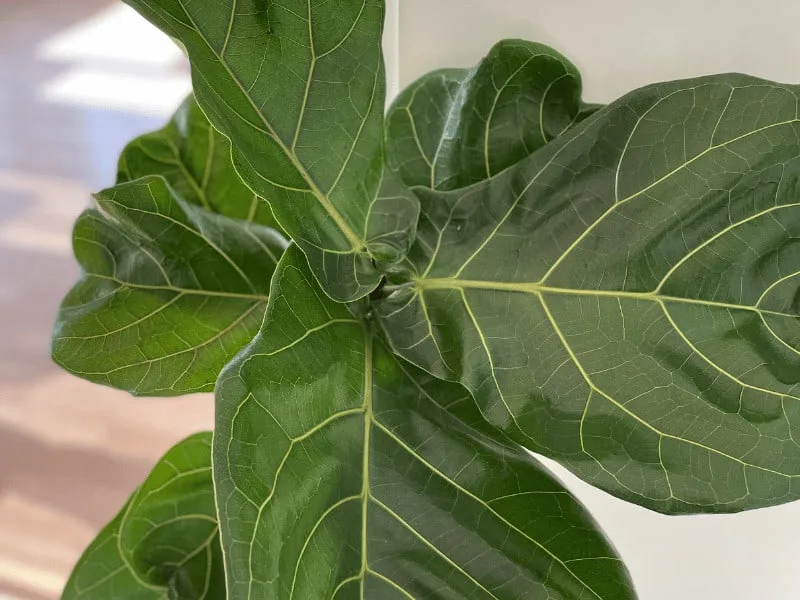
7. Monstera (Monstera deliciosa): The Swiss Cheese plant is known for its holes and slits in its leaves.
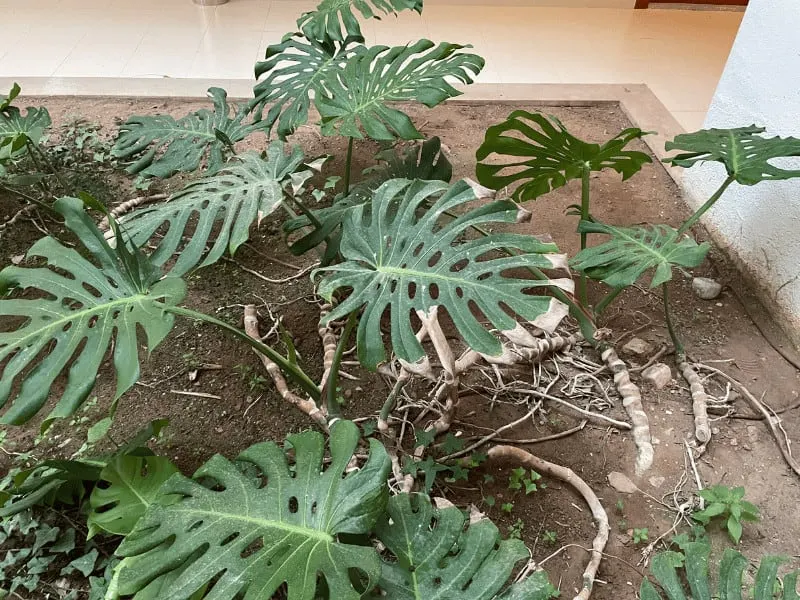
8. African Violet (Saintpaulia spp.): Produces small colorful flowers and is an all-time favorite fro many gardeners.
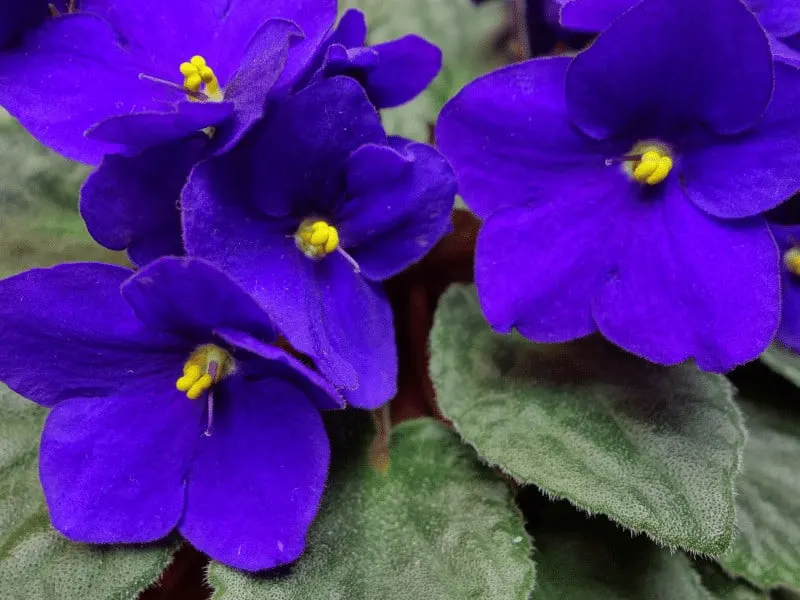
9. Alocasia (Alocasia spp.): Alocasias come in all sizes and colors and usually sport large leaves
![Tropical Plants Care #1 Best Guide [Expert Advice] 4](https://plantophiles.com/wp-content/uploads/2023/08/Alocasia.jpg.webp)
10. Orchids (Orchidaceae family): Orchids produce stunning flowers and air roots. One of the best-known orchids is the moth orchid.
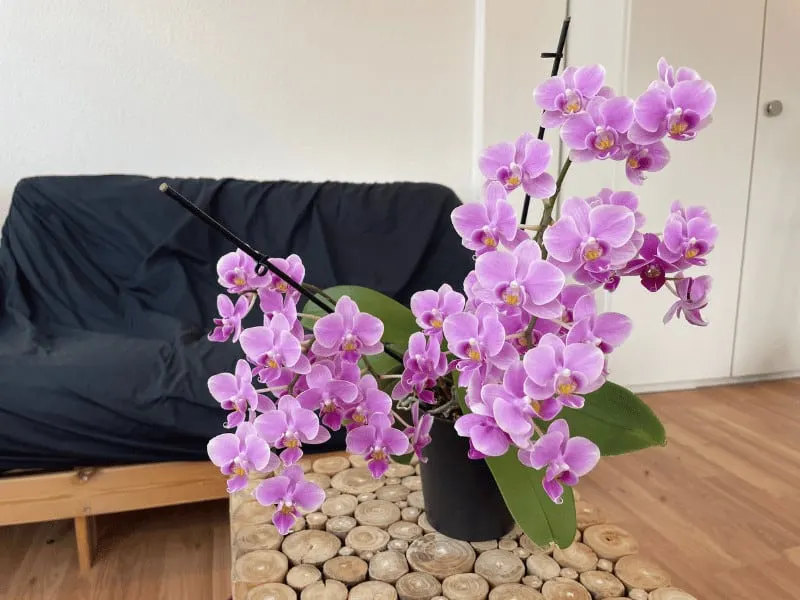
FAQ
Can you grow tropical plants indoors?
Absolutely! They might need a little more pruning than your typical houseplant.
What are some types of tropical plants?
The beauty of investing in tropical plants is that they are incredibly diverse. Tropical floras include Bromeliads, Laceleaf, Philodendrons, and Fig trees.
How do you prune tropical plants?
Begin by removing the longer branches, and cutting them back by a third of the overall length. All dead leaves and foliage should also be taken off. Any cuts you make should be angled towards the joints to reduce the chances of growing in the wrong direction.
These were the best tips for tropical plants care based on my more than 20 years of experience.

Daniel has been a plant enthusiast for over 20 years. He owns hundreds of houseplants and prepares for the chili growing seasons yearly with great anticipation. His favorite plants are plant species in the Araceae family, such as Monstera, Philodendron, and Anthurium. He also loves gardening and is growing hot peppers, tomatoes, and many more vegetables.

![Tropical Plants Care #1 Best Guide [Expert Advice]](https://plantophiles.com/wp-content/uploads/2020/08/Tropical-Plants-Plant-Care-Guide-480x270.png.webp)
